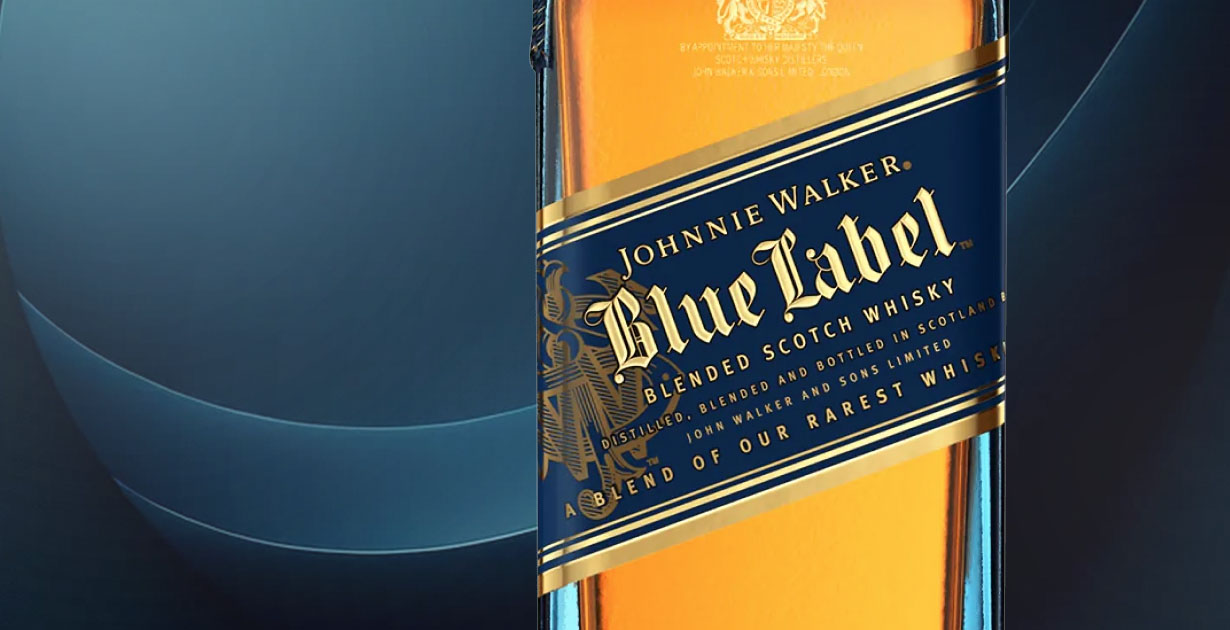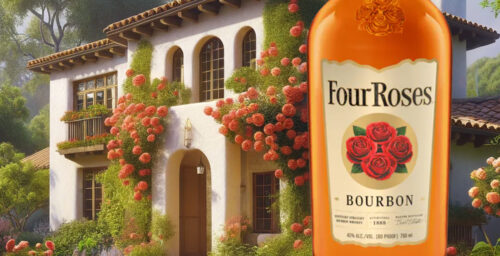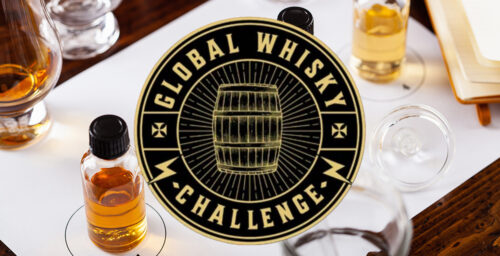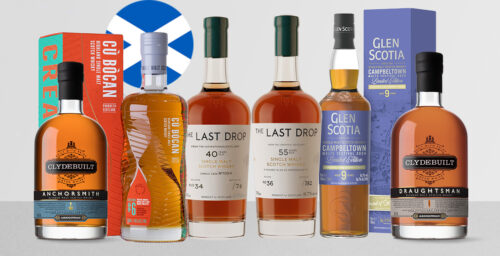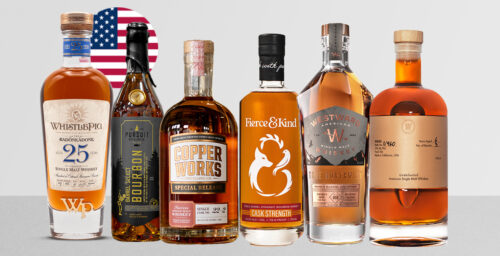One of the most popular and rarest whiskies on the market, Johnnie Walker Blue Label is the premium expression from Johnnie Walker, the world’s best-selling whisky brand.
A luxury blend representing a combination of Scotland’s rarest and most exceptional whiskies, Blue Label has attained continuing worldwide acclaim.
Exploring the origins, age, and best serving suggestion – this ultimate guide provides everything you need to know about Johnnie Walker Blue Label.
How old is Johnnie Walker Blue Label?
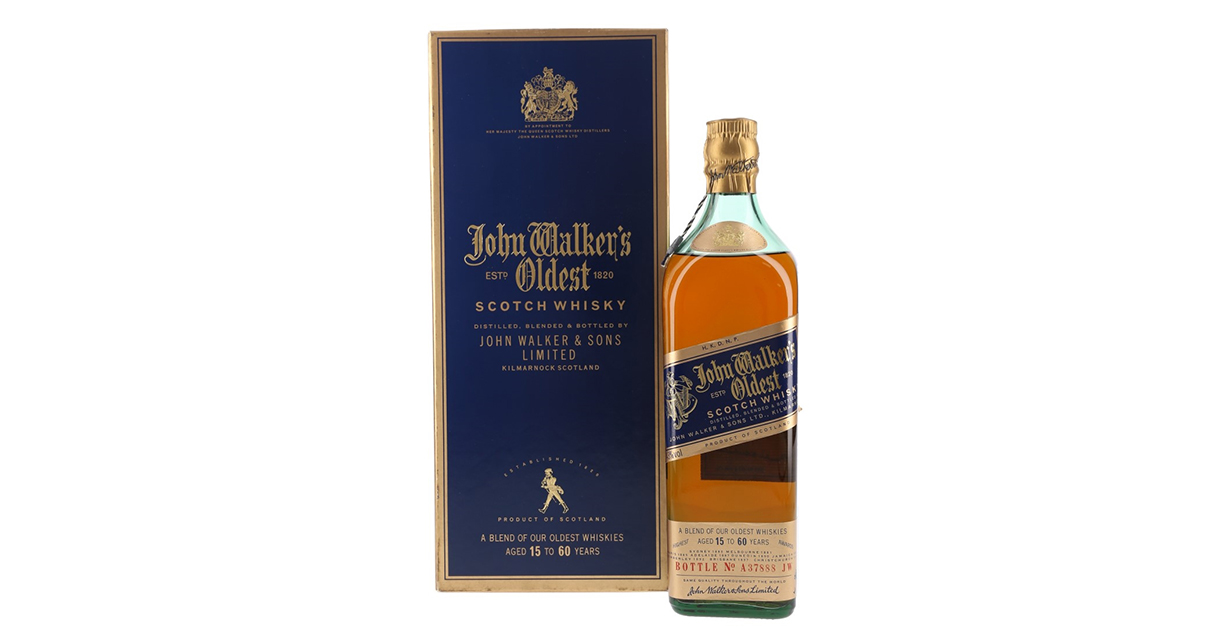
Johnnie Walker Blue Label was originally released as ‘Johnnie Walker Oldest’ in 1992 before the expression was rebranded in 1994.
Blue Label was first blended to recreate the character and invoke the flavours of classic early 19th century whisky blends, combining casks sourced from malt and grain distilleries from the four corners of Scotland. This can even include casks from ‘ghost’ distilleries that are now lost and demolished.
It is unknown exactly which rare distillery’s casks are included in the expression. However, the blend’s core single malts are supplied from the Benrinnes, Cardhu, Clynelish, and Caol Ila distilleries.
Blue Label’s main grain whisky components are sourced from Cameronbridge and the now-demolished Port Dundas Distillery. As each cask used to create Blue Label is selected by Johnnie Walker’s master blender, the blend is only produced in small batches with each bottle numbered serially. The whisky is packaged in a silk-lined presentation box accompanied by a certificate of authenticity.
How long is Johnnie Walker Blue Label aged?
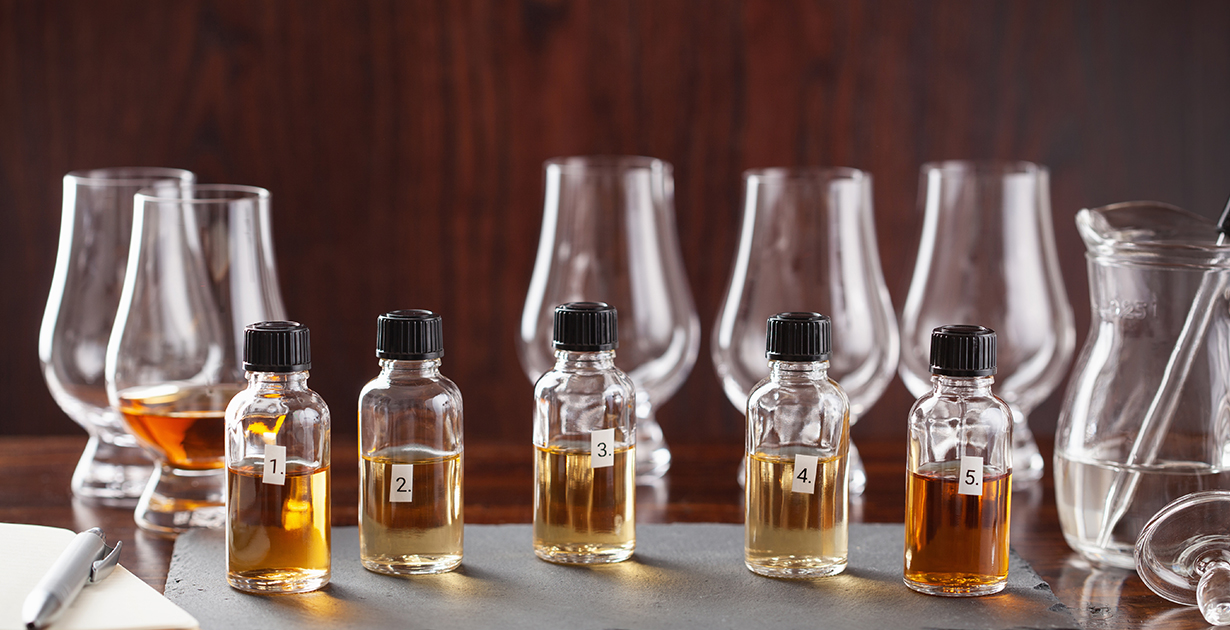
Johnnie Walker’s Blue Label expression carries no official age statement, instead relying upon its intricate and complex flavors to define the blend’s prestigious reputation.
When originally launched as ‘Johnnie Walker Oldest’, the earliest bottlings carried the statement ‘Aged 15-60 Years’, a notation which abruptly vanished after the first small batches were released.
Blue Label’s age statement omission has provoked continued speculation and discussion amongst whisky enthusiasts regarding the age of the whiskies used to create the blend. For a spirit to be legally designated as scotch whisky, it must have been matured for at least three years in oak casks.
It’s safe to assume the component whiskies exceed the mandatory three years, in some cases possibly by decades.
Each cask is selected by Johnnie Walker’s blending team based upon quality and taste rather than age to produce a consistent flavor profile for the premium blend.
Johnnie Walker’s master blender, Dr. Emma Walker, explains: “Mature aged whiskies are selected for their smoothness and deep flavours… balanced with younger, more vibrant whiskies they open up, bringing layers of effervescent flavour”.
Only one in every 10,000 casks, including the irreplaceable casks from long-closed ‘ghost’ distilleries, is selected to blend Blue Label, and the whiskies allegedly range in age from seven to 50 years old.
How much is Johnnie Walker Blue Label?
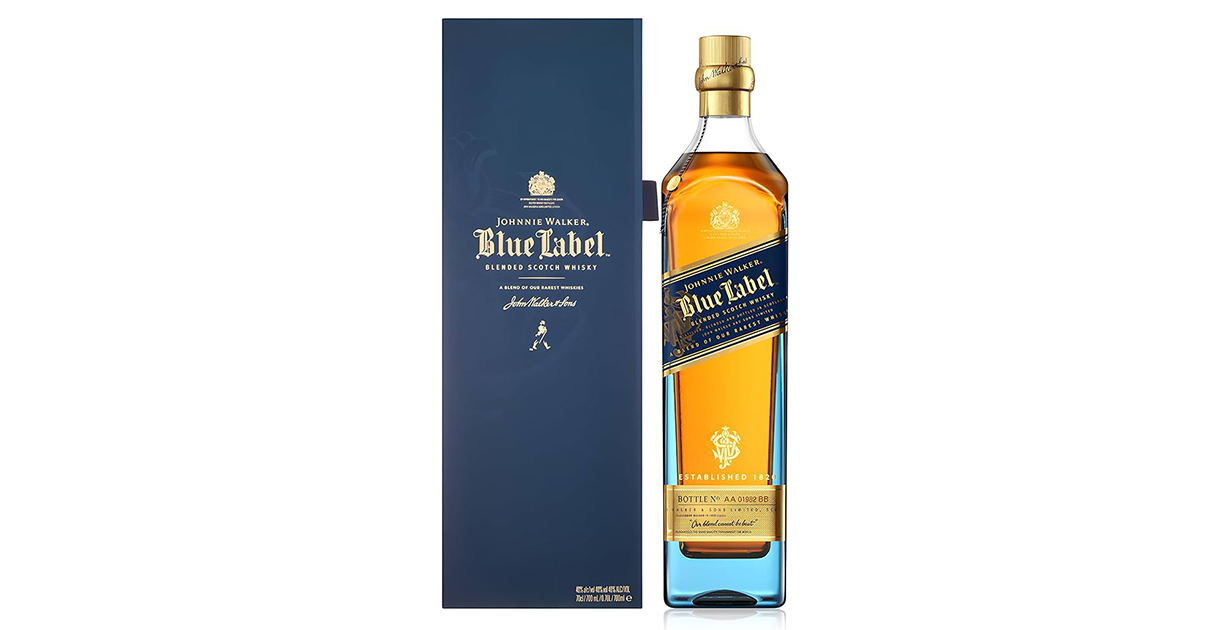
The average price for a 750ml bottle of Blue Label is currently $232 on Wine-Searcher. If you’re based in California, the best place to find Blue Label is Total Wine & More, Sacramento for $175.99. While in New York, the best place to purchase Blue Label is Prime Wine & Liquor for $179.94.
The prestige status and brand reputation of Johnnie Walker contribute to the price point. The name ‘Blue Label’ invokes connotations of quality, tradition, and prosperity. The iconic whisky has come to represent the ultimate gift or special occasion whisky.
Is Johnnie Walker Blue Label a good whisky?
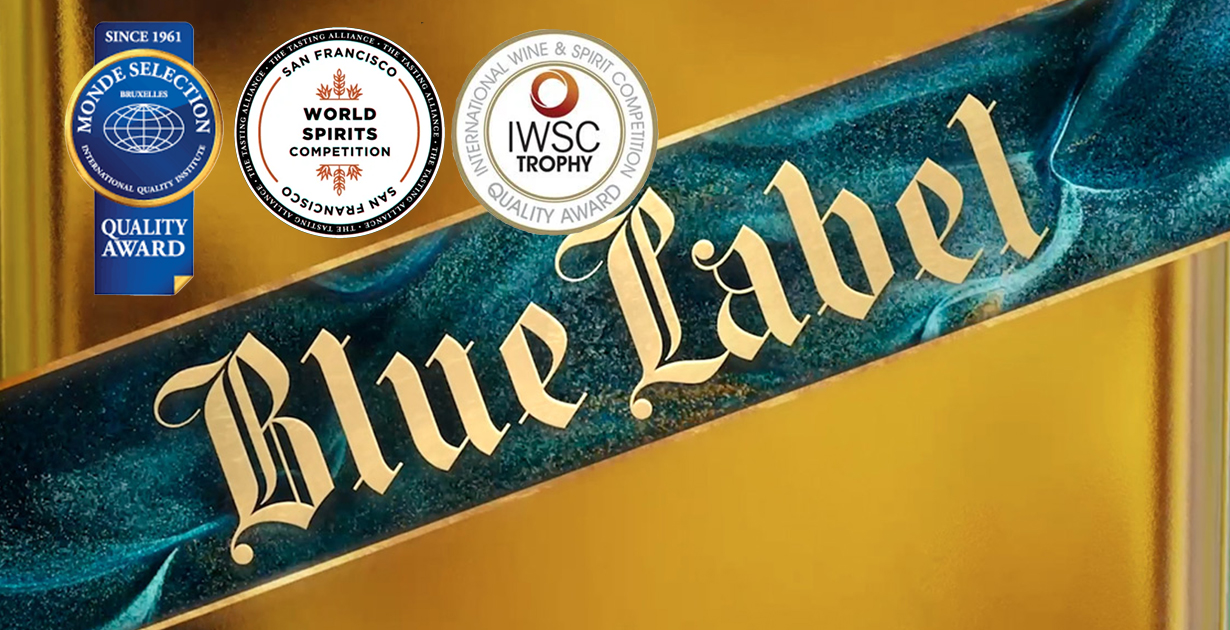
Johnnie Walker Blue Label is the most consistently acclaimed blended scotch whisky in the world. From the expression’s debut in 1992, the blend proved an instant success, selling 50,000 cases globally by 1997. The multi-award-winning whisky’s accolades include six Monde Selection Grand Gold medals, and gold medals from the San Fransico World Spirits Competition and International Wine & Spirit Competition.
Blue Label’s smooth velvety profile imparts flavors of hazelnuts, dark chocolate, and citrus fruits, rounded off by a luxurious long-lasting smoky finish.
Master blender, Dr. Emma Walker, concludes that the expression “embodies rarity and ultra-premium quality”.
How is Johnnie Walker Blue Label best enjoyed?
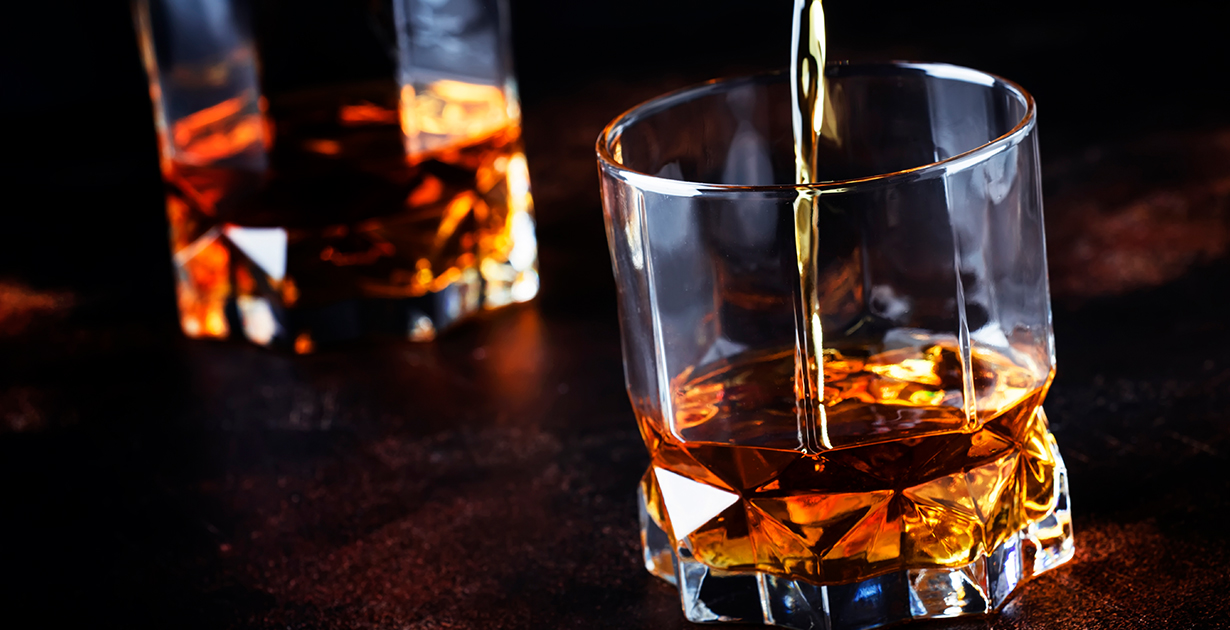
Johnnie Walker Blue Label is best enjoyed neat, to properly savor this smooth, rich, and rare blend.
According to the Johnnie Walker website’s Signature Serve, the ideal way to drink Blue Label is served neat accompanied by a glass of chilled water. Sip the water first, to cleanse the palate and fully appreciate Blue Label’s symphony of powerful flavors including dried fruit, dark chocolate, and rich spices.
For those who favor minimal dilution, opt for a few drops of chilled water to gently open up the whisky’s subtler notes without overwhelming the blend’s core character and flavor.
If exploring food pairings, the expression pairs perfectly with dark chocolate, with the richness and smokiness of the whisky complemented by the fruity bitterness from the chocolate.
The History of Johnnie Walker
If you are looking for an in-depth history of the world’s most beloved scotch whisky brand, then head over to YouTube, where Mark is breaking down the history of Johnnie Walker in a multi-part series.
Or, if you are interested in other Johnnie Walker expressions, check out 5 Things You Didn’t Know About Johnnie Walker Black Label.

